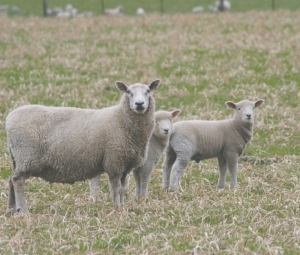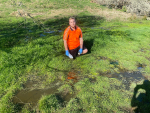Low feed covers following a difficult summer and autumn mean pregnant ewes are currently more susceptible to parasites than usual in some regions, and faecal eggs counts (FEC) are showing the results.
Merial relays veterinary comments endorsing that, such as those Anthony Oswald, Taihape Veterinary Services.
“There have been some high FEC’s in those ewes under nutritional stress, and we expect we’ll be doing a lot of counts over the next few months, especially around scanning time, to help farmers identify mobs with high worm burdens,” Oswald told Merial.
Merial says both he and Gisborne vet John Meban, Eastland Veterinary Services, stress the situation varies widely between districts, and advise careful monitoring particularly for multiple bearing ewes with a condition score of 2.5 or less.
Broader use of long-acting parasite treatments such as BIONIC capsules may be warranted for these animals this year, but as with any drench decision, the first step is parasite risk assessment.
It is also important to remember when long acting products are used steps must be taken to mitigate selection pressure for resistance.
Meban says this may mean leaving some animals untreated or following treated animals with untreated to create refugia or mop up resistant worms.
“There are several decisions to be made depending on feed availability, ewe age, ewe condition score, number of lambs on board and stocking rates. Most importantly drench choice should be based on knowing the drench resistance status for your property.
“For some of our farmers, who destocked early, there may well now be an opportunity to try and recover body weight in light ewes post-scanning. Others have a long way to go before they’re out of the woods.”
Oswald says depending on feed situation and ewe condition, he and his farmer clients will be looking at using long acting anthelmintics in some situations, to provide parasite protection 6-8 weeks ahead of lambing, instead of the standard 3-4 weeks.
“We’re all aware of the issues long-acting products have in relation to drench resistance, but in a season like this, ewe productivity and welfare are also priorities.”
Justin Hurst, technical services and regulatory affairs manager for Merial Ancare, says there’s a narrow window in which to set up flocks for lambing this year.
“In general… seriously contemplate those twin-bearing ewes that are still on the farm; evaluate the environment in terms of the need to manage parasites to maintain productivity in those animals and act accordingly in consultation with [your] vet.”
Less worm challenge during the drought doesn’t mean there won’t be worms there during winter, he adds.
“Worms come back with a vengeance in New Zealand pastoral conditions and systems.”

















